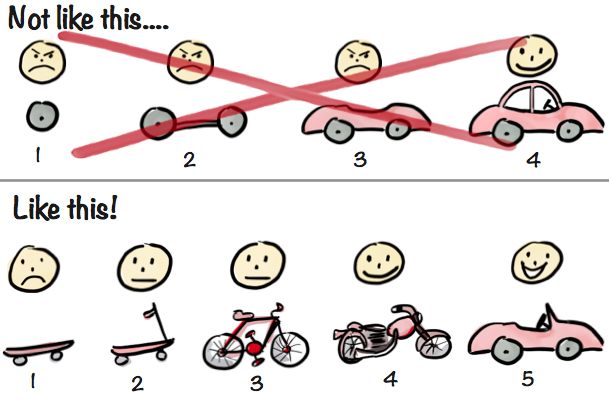30 Jul

Starting a new business is an exciting journey, especially when you’re refining a product that could be the next big thing.
Now, nearly everyone has heard of the Minimum Viable Product or MVP, but more recently I have wanted founders to focus on the MVB or Minimum Viable Business.
Why? Because over many years of working with tech startups, I came to a realisation that we often ignore the needs of the business, so the MVB focuses on making sure the whole business is sustainable. But what does this really entail, especially concerning the product?
Here are my three critical considerations I suggest you keep in mind:
Does the Product Work for the Customer?
At the heart of any successful business is a product that resonates with customers, and it is the primary focus of an MVP, getting to what the customer needs with the smallest amount of features.
Now there are reams of content on MVPs and their aspects, and I won’t dive too deep into that endless abyss here… maybe a later blog, but here are some of the main headlines which are worth keeping account of:
- Understand Customer Pain Points: Conduct thorough market research to identify the problems your target audience faces (yes that age-old advice of get out of the building). Your product should be a solution to their key pain point or points.
- Gather Feedback Early and Often: Use beta testing and pilot programs to gather feedback from actual users. This will help you understand what works, what doesn’t, and what needs improvement. There are loads of ways of showing what you want to do cheaply and quickly even before you build. Designs, wireframes and mockups are your friend here and don’t worry about them being pixel-perfect, just show them and get feedback!
- Focus on Usability: Ensure that your product is intuitive and easy to use. A complicated product, no matter how innovative, will struggle to gain traction. Think about that first moment someone picks up your product and what they want to achieve, and make sure they can do it in the least amount of steps or are guided in a way that makes it seamless.
Does the Product Work for Your Business?
While customer satisfaction is paramount, the product must also align with your business objectives and operational capabilities. The operational capabilities here are key for early-stage founders, especially solo founders as you are often wearing so many hats and have so many drains on your time that sometimes you need your product to help you.
- Align with Business Goals: Your product should support your overall business strategy. Whether your goal is market penetration, brand building, or revenue generation, ensure your product is a tool to achieve these objectives.
- Cost Efficiency: Consider the cost of production and maintenance. A product that is too expensive to produce or maintain can drain resources and affect profitability long term. A great thing to think of here especially with tech is the environments and providers you use, see if you can find startup credits to ease this burden!
- Operational Compatibility: Make sure your product fits within your current business operations. This includes your supply chain, distribution channels, and team expertise. Think about your skill set too. If you are non-tech (which is fine, I always say I’m a non-techy) don’t put more burden on yourself to dig through databases to find information, that could be hours learning and doing that could be spent selling and promoting.
Will the Product Have the Ability to Scale with Your Business?
As your business grows, your product needs to evolve and scale accordingly. The above points in my mind come first with the MVP focus, but these are definitely considerations that you should have in mind.
- Scalable Design: Design your product with scalability in mind. This means thinking ahead about how it can handle an increasing number of users or transactions without compromising performance. A good example building on the above is you maybe able to invoice manually when there are 5 to 10 users… how is that going to work with hundreds of users or thousands? Are you hitting that point in your forecasts and when? Is this something worth adding now or is this something a hire can fix?
- Adaptability: Your product should be flexible enough to incorporate feedback and adapt to changing market needs. This might include modular design or the ability to integrate new features easily.
- Sustainable Growth: Consider how your product will support sustainable growth. This includes not just the technical aspects but also customer support, production capabilities, and financial planning. These are all the aspects of your business that you need to scale at the right time.
Conclusion
In the journey of building a Minimum Viable Business, focusing on your product is crucial. It needs to work for the customer by solving their problems, being user-friendly and ultimately being something they are willing to pay for. It must align with your business goals and operations to ensure it is viable and sustainable in the short term when your resources are usually most stretched. And finally, your product should have the potential to scale as your business grows, adapting to new demands and larger user bases, especially if down the line you are looking for investment. Balancing these elements with your MVP will set the foundation and give you the best chance at having a successful and scalable business venture.

